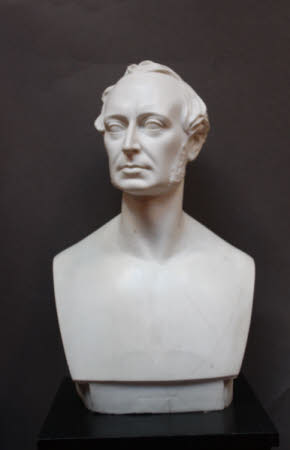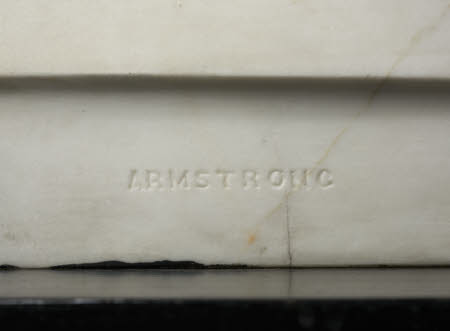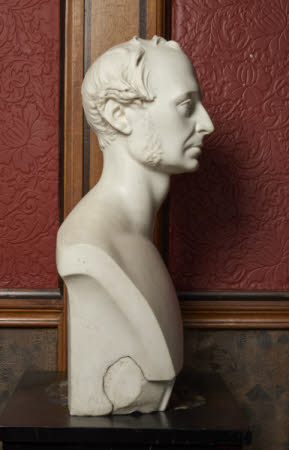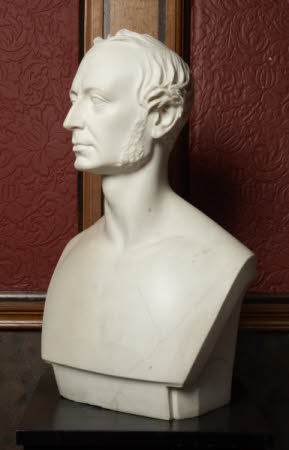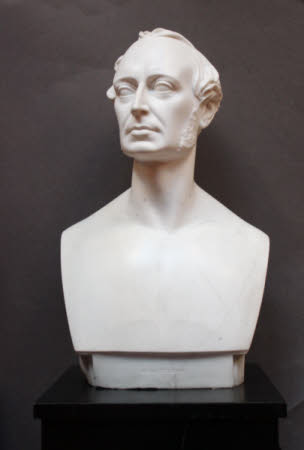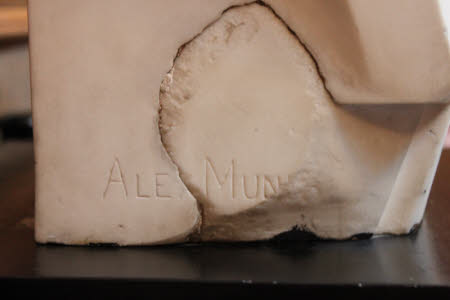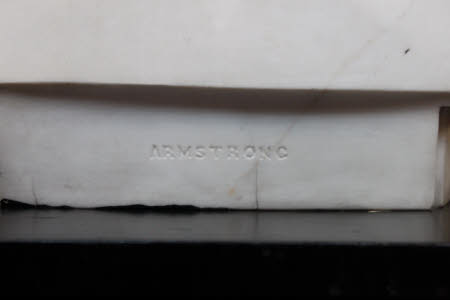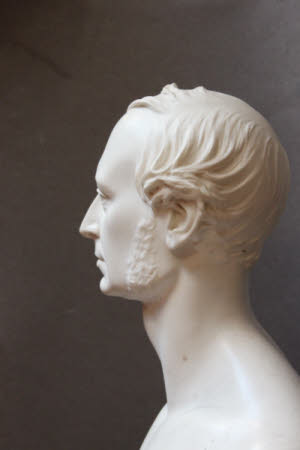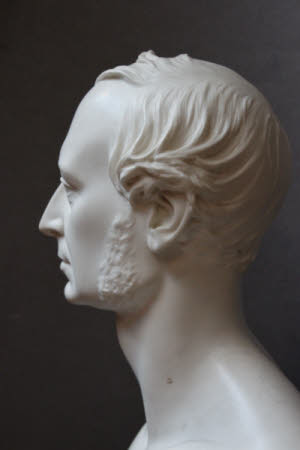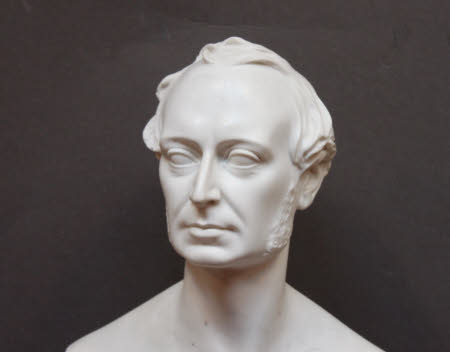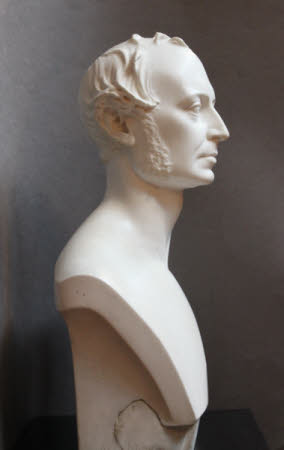Portrait bust of Sir William George Armstrong, 1st Baron Armstrong of Cragside (1810-1900)
Alexander Munro (Inverness 1825 – Cannes 1871)
Category
Art / Sculpture
Date
1860 - 1861
Materials
Marble
Measurements
650 mm (H)
Place of origin
London
Order this imageCollection
Cragside, Northumberland
NT 1230984
Summary
Sculpture, marble; portrait bust of Sir William Armstrong; Alexander Munro (1825-71); c. 1861. A marble portrait bust by Alexander Munro of Sir William Armstrong (1810-1900), the engineer, industrialist and builder of Cragside. One of two very similar portraits of Armstrong by Munro at Cragside, this version is in the form of a herm.
Full description
A marble portrait bust of Sir William Armstrong by Alexander Munro (1825-71). The bust depicts Armstrong looking slightly to his right, the bust section in the form of a herm. Signed on the right-hand edge of bust at the bottom. Damaged in a fire in 1893; the signature damaged by a significant break and loss of a section of stone. A hairline crack in the neck of the sitter and others on the proper-left side of the bust. Among his many other benefactions, Sir William Armstrong was one of the chief supporters of the Literary and Philosophical Society of Newcastle-upon-Tyne (the Lit and Phil) over many years. In the 1850s, he gave the Society a significant bequest of books from the library of his father, Alderman Armstrong. In 1859, when he was one of the Society’s Vice-Presidents, Armstrong provided substantial funds for the construction and fitting out of a lecture room for the Society, which opened in 1860 (Robert Spence Watson, The History of the Literary and Philosophical Society of Newcastle-upon-Tyne (1793-1896), London 1897, p. 131). The bust of Armstrong was clearly commissioned to commemorate this extremely generous gift. It was exhibited at the Royal Academy Summer exhibition of 1861, described as ‘Sir William Armstrong, K.C.B., to be placed in the Philosophical Institution, Newcastle-upon-Tyne’. Munro sent to his friend Pauline, Lady Trevelyan, chatelaine of Wallington Hall, a photograph of the head, ‘which some people consider the best Bust I have done’ (Katharine Macdonald, ‘Alexander Munro: Pre-Raphaelite Associate’, in Benedict Read and Joanna Barnes, eds., Pre-Raphaelite Sculpture. Nature and Imagination in British Sculpture 1848-1914, London 1991, pp. 46-65, p. 62). On 8 February 1893, the morning after an event at the Lit and Phil to celebrate the Society’s centenary, a fire broke out, damaging the building and its collections, including Munro’s bust of Sir William Armstrong. The damage is particularly noticeable on the proper right side around the signature, but fire damage may also have contributed to a general degradation of the surface, so that an area such as the hair appears now very much softer and less finely modelled than it does in the other version of this portrait at Cragside (NT 1231038). The second version was presumably ordered by Sir William Armstrong for himself at the time of the commission, along with a third version, which Vickers Armstrong presented to the Lit and Phil as a substitute for the present bust, after it had been damaged in the fire. The damaged portrait was in turn presented by the Lit and Phil to the National Trust for display at Cragside in 1977. Jeremy Warren March 2022
Provenance
Commissioned by the Literary and Philosophical Society of Newcastle-upon-Tyne in 1860; exhibited at the Royal Academy, 1861, no. 1101; given by the Literary and Philosophical Society, Newcastle-upon-Tyne in December 1977.
Marks and inscriptions
On bust at front: : ARMSTRONG On proper right edge, towards bottom: : ALEX MUN[RO]
Makers and roles
Alexander Munro (Inverness 1825 – Cannes 1871), sculptor
References
Royal Academy 1861, p. 48, no. 1101. Pre-Raphaelite Sculpture Nature and Imagination in British Sculpture 1848 - 1914 (eds. Benedict Read and Joanna Barnes), The Matthiesen Gallery, London, 31 October - 12 December 1991, Birmingham City Museum and Art Gallery, 15 January - 15 March 1992, p. 62.
